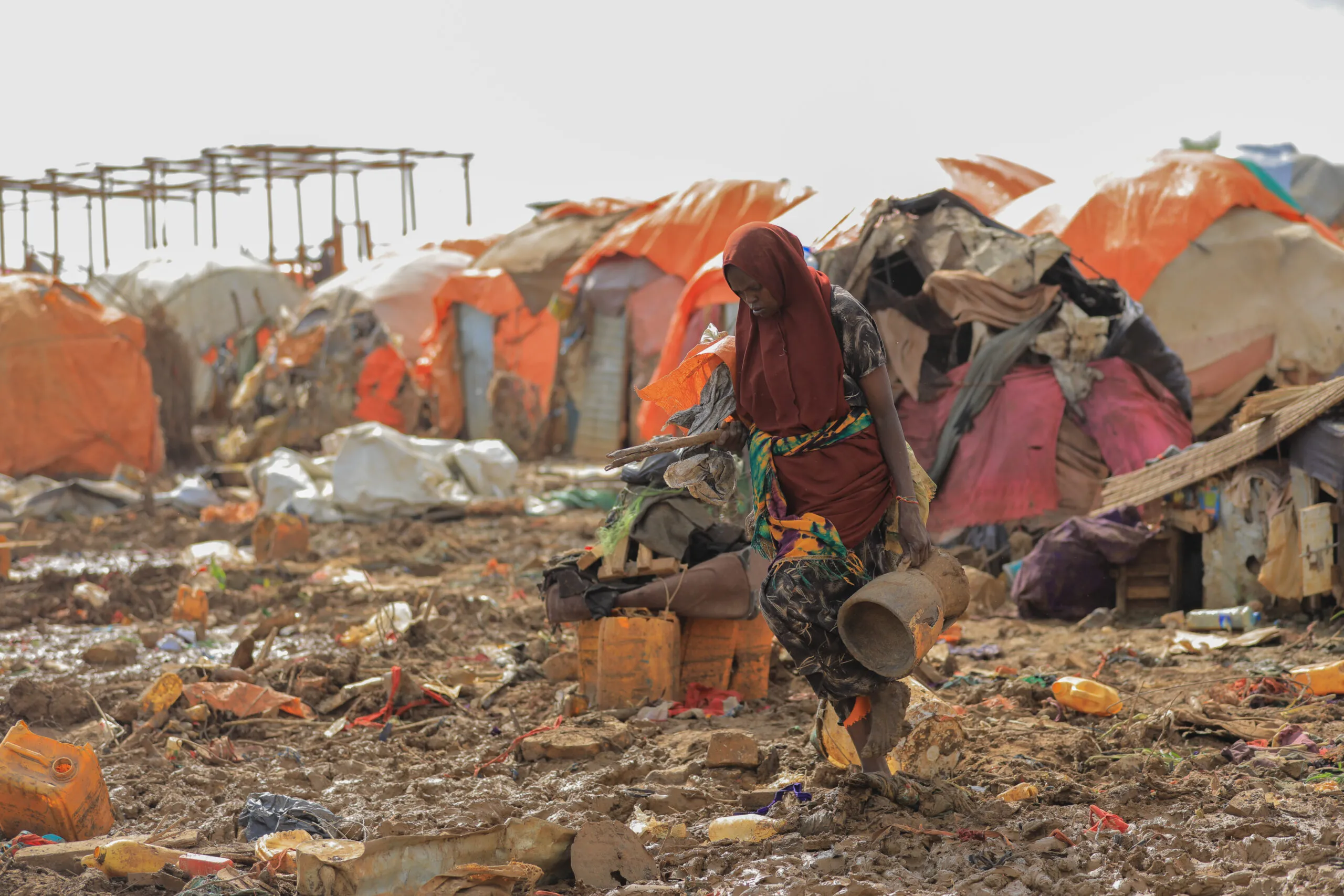Over 230 Killed, Hundreds of Thousands Displaced.
CARE, NAIROBI, Kenya – November 29, 2023 – Intense rainfall, fueled by the El Niño weather pattern, has led to extensive flooding throughout the Horn of Africa. The relentless downpour, which started in October, has brought death, destruction, and displacement across Somalia, Kenya, and Ethiopia. With the severe rains causing massive floods, many remain vulnerable as rivers burst banks and dams threaten to overflow.
The flooding has wreaked havoc on infrastructure, destroying homes, hospitals, schools, and roads. Crops have been inundated, and livestock have perished, exacerbating the already dire humanitarian situation in the region.
“This is a catastrophe of unprecedented proportions that requires urgent attention and swift response to save lives. Communities had barely recovered from the drought when the rains came. The scale of the destruction is immense, and the needs of the affected communities are overwhelming. With the rains still ongoing, we fear that there will be more devastation,” said Kate Maina–Vorley, CARE International Regional Director for East and Central Africa.
In Kenya, flooding has led to the death of 90 people and the displacement of thousands. At the Dadaab refugee camp, home to over 330,00 refugees, the situation is worsening daily. Thousands of Somali refugees who had fled into Kenya due to drought but were yet to be registered have been displaced as the area they had settled in flooded.
Another major issue is that the camp’s remoteness means that supplies cannot easily reach the needy.
“Due to the floods, roads have been washed away and we are now completely cut off from the rest of the country. Fuel trucks are unable to reach the camp, therefore 19 of the 22 water boreholes are currently inoperable due to a lack of fuel. The remaining three are expected to stop working before the beginning of December. As it is quite cloudy, solar-powered pumps are not able to run the boreholes and we foresee total water pump failure by December. This presents a crisis for the hundreds of thousands who depend on the boreholes for water. The only option they have now is to harvest rainwater with jerrycans,” said John Mwangi, CARE Kenya Humanitarian & Refugee Program Manager.
In Somalia, 33 districts are experiencing extreme flooding that has already led to the death of 99 people and displacement of over 695,000. The Shabelle and Jubba Rivers have burst their banks, flooding vast swathes of land. This has caused many areas to become inaccessible, prompting communities to evacuate and seek refuge on higher ground. With excess flooding, the spread of waterborne diseases has increased. Reports indicate that there has been a spike in cases of acute watery diarrhea as well as malaria.
In camps where people had settled in due to drought, the situation is worse. With a lack of clean water, women and girls are exposed to higher risks of violence as they go in search of water.
“I’ve met mothers who have told me that they are walking two or three kilometers to get access to clean water because all the sources of water have been destroyed by the floods,” said Walter Mawere, CARE Somalia Advocacy and Communication Coordinator after visiting Wayaama Gubey camp in Baidoa Somalia.
In Ethiopia, the floods have killed over 43 people, displaced over 760,000, and caused widespread damage to crops and livestock. Only 8 percent of the flood-affected communities are receiving assistance.
The international humanitarian community is scaling up its response to the crisis, but the needs are far outpacing the available resources. With weather forecasts predicting rains continuing into the first quarter of 2024, a scaling up of the response is needed. CARE calls for urgent international assistance to provide food, shelter, and medical care to the affected communities.
“As the world’s eyes will be on COP28, there is a need to remember the vulnerable people in the Horn of Africa living and witnessing the effects of climate change daily. It is important to note that the worst affected countries contribute the least to climate change. The international community must step up and provide the resources needed to help the people of the Horn of Africa recover from this disaster,” said Kate Maina-Vorley. “The lives of millions are at stake.”
For media inquiries, please contact:
David Mutua, CARE East Central, & Southern Africa Regional Communications Advisor: via: david.mutua@care.org
Anisa Husain, CARE US Press Officer: via Anisa.Husain@care.org
Notes to Editors:
CARE is responding to the crisis across all the countries.
- In Kenya, the Country Office has prepositioned WASH supplies, hygiene materials, NFIs, jerricans, soaps, water treatment chemicals (chlorine), disinfectant (40 cartoons in the refugee camp), and over 7,000 cartons of food.
- In Somalia, the Country Office has rolled out cash interventions targeting 198,000 people in North and South-Central Somalia. The Team is also working with health facilities supplying nutrition and health supplies.
- In Ethiopia, the team has increased the number of mobile health clinics and is also responding with water trucking, and emergency shelters alongside distribution of Non-Food Items.
- Across all three countries, CARE works to focus on women and girls in emergencies and prevention of violence against women and girls.

